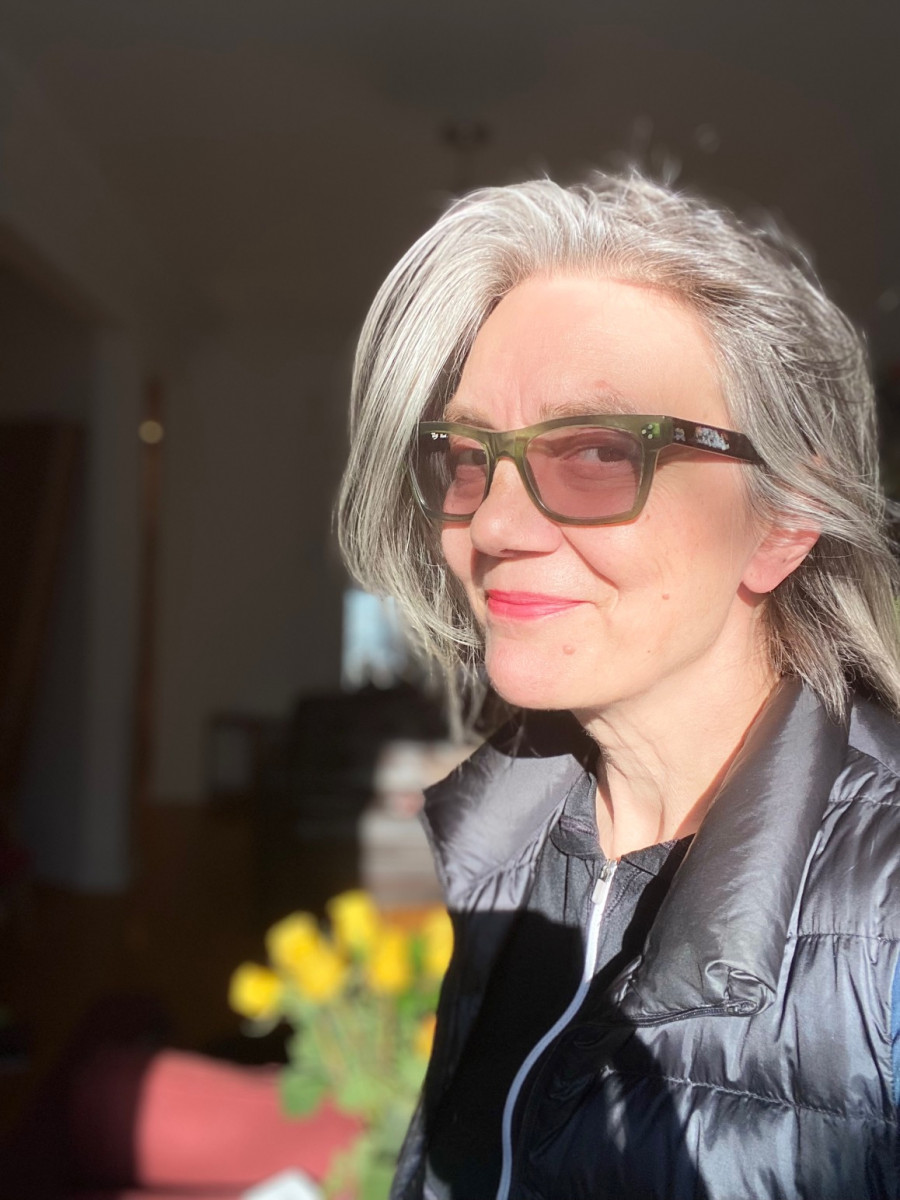Rooms: Women, Writing, Woolf, and coming of age
Sina Queyras tells the story of their queer body in academia
With lines such as, “[...] my perspective deepened, widened, rose above, until I felt like an emotional astronaut, an umbilical cord on my head connecting me to the vast collective of animals, people, and trees,” (10) the way Sina Queyras describes settings and people in this novel shows not only versatility, but a mastering of their craft. It comes as no surprise to know, then, that they are a lecturer in Concordia’s creative writing department.
Released on May 31, Queyra’s most recent book, Rooms: Women, Writing, Woolf, is the consummation of Queyras’ enduring attempts to connect Virginia Woolf to their personal life, as well as their writing journey, and how both of these relate to the struggles of queer and female bodies. It tells Queyras’ own coming-of-age story as they move from a troubled childhood and adolescence in rural British Columbia. It then takes the reader to the beginning of their adult and professional life following their return to university after having dropped out of high school. As Queyras tells this story, anecdotes portraying experiences of sexism and homophobia are naturally woven into the text. This creates a journey in which Queyras discovers their own power and independence, and shows the reader a time where their experiences forged the way they view their sexuality.
Unfortunately, the way Queyras discusses their journey with gender identity often relies on notions of a strict gender binary. That said, praise is deserved for putting that journey into words in the first place. “Writing this book has helped me come to terms with the way that I’ve largely shut down the part of me that is non-binary over the years, both in my life and my writing,” they told The Link. By opening up that part of their identity, Queyras is also creating space for more non-binary people to exist, feel represented, and write.
The contemporary writing scene is indeed growing to include more of these experiences. Queyras did not shy away from praising their contemporaries, foregrounding Isabel Waidner, Andrea Lawlor, and Mattilda Bernstein Sycamore as creative innovators in the portrayal of gender and sexuality. Queyras even mentioned a graduate of Concordia’s creative writing program, Eli Tareq el Bechelany-Lynch, whom they say is “doing crucial work exploring queer bodies.”
While Queyras is a white person of French and Icelandic descent, and their mother tongue is English, their understanding of how it feels to learn the English language autodidactically is strikingly accurate. In Rooms, they explain they were never good in classroom settings, and didn’t finish high school, partly because they failed their English class multiple times. Because of this, they had to learn English grammar autodidactically before going back to school. “People who come to language by trial and error rather than by a fundamental grasp of grammatical systems generally do not learn those systems in the way a native or well-educated speaker and writer of that language naturally assumes,” (29) Queyras writes, reflecting on their experience of learning English grammar. This understanding of the difficulties in learning the language is surprising not just because it might seem like a white, settler-Canadian author might never know how to put it into words, but also because it is coming from a university professor. Nonetheless, Queyras affirmed that they believe “grammar is necessary to writing, but it’s not sufficient. [...] Ideas are the energy—the fuel of writing.” When asked about their role as a professor, and how that relates to their position on grammar, Queyras said they are aware not every student has learned English in a classroom. They try to keep that in mind when grading assessments.

At many points throughout Rooms, Queyras questions academia and the English canon; “why was it I had to wait until the end of a two-semester survey course to encounter a woman writer?” (30) they write. Even though these were thoughts Queyras had as they undertook their undergraduate degree in the late 80s, the same question can be asked today, to Concordia’s English literature department. While there are courses on Joyce, Shakespeare, Chaucer, Tolkien, Spenser and Milton, there are no courses on Elliot, Dickinson, the Bronte sisters, Austen, or the subject of Queyras’ book, Woolf. And what of authors of color? “I have encountered so many people in positions of power who have never had their view of the world questioned,” said Queyras. “As I outline in Rooms, they tend to react with incredulity when challenged. That’s still true today, even if they have an understanding of equality and are concerned with the idea of diversity. There’s a sense that the problem is elsewhere.”
One of the main themes in this book is Queyras experience of being a “young queer body coming to consciousness,” (45). They expanded on that idea in interview, saying, “I grew up in a world where camps—logging or mill work, construction, and mining—were a central part of our lives, literally the organizing principle of some of the towns I lived in [...]. I had the feeling, growing up in some of these spaces, that we were just adjacent to the plunder.” This is very much the picture that is painted in the book, as Queyras moves chronologically, though tangentially, through their life. They continued, “my own experience coming to myself, having slipped out of the grip of resource extraction, then through so many sexist and often homophobic rooms had a great impact on my body, and my thinking—and in my own search for my room. I am still processing it.” A particularly powerful quote in Rooms that highlights this theme comes in as Queyras reflects on the lack of support they had from family as they studied their undergraduate degree. They remember thinking, “why does no one clamour to get me down this path?” (52).
Queyras draws ties between their life story and Woolf’s novels, diaries, and letters throughout the entire book. Woolf’s writing is deeply cognitive. It focuses on the inner workings of the mind, to an extent where the reader can see a character’s subconscious being traced in front of their eyes. Queyras’ text works in similar ways. For instance the word “rooms” is used structurally to create patterns in the text, where cathartic moments are framed through the physical aspects of the different rooms Queyras is in. For example, a moment when Queyras experiences domestic violence, and uses the different doors and windows as ways of portraying their emotional state.
On a more technical note, Rooms has rhythm in the narrative, in the overall text structure, but lacks this in its prose. Throughout the text, it is not clear whether it is a novel, or an essay, because if it is a novel it is written like an essay, and if it is an essay it is presented like a novel. Queyras described the book as “[...] part memoir, part essay.” Perhaps this isn’t a defect; genre-bending is an increasingly trending way of writing. For a book that is centred around Woolf’s writing, it wants Woolf’s quasi-poetic prose, which smoothed out the author's own experiments in breaking genre. Woolf’s writing style is a delicacy that can rarely be enjoyed in other authors.
Rooms touches on a lot of important topics while also honouring Woolf’s legacy, proving that Woolf continues to be relevant to literary and feminist discourse, almost 100 years after her famous essay, A Room of One’s Own, was published.


_600_832_s.png)

1_600_375_90_s_c1.jpg)


